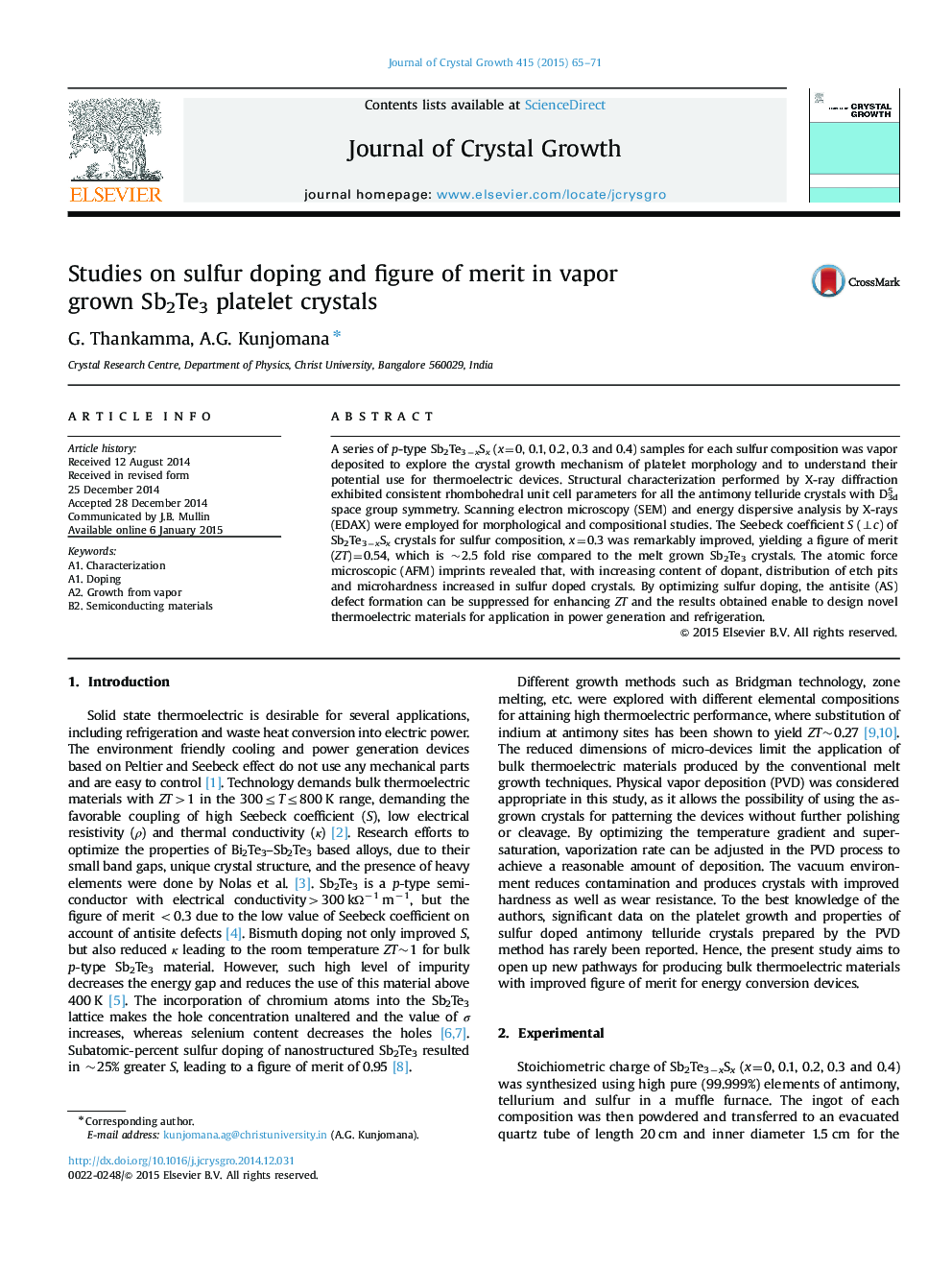| Article ID | Journal | Published Year | Pages | File Type |
|---|---|---|---|---|
| 8150539 | Journal of Crystal Growth | 2015 | 7 Pages |
Abstract
A series of p-type Sb2Te3âxSx (x=0, 0.1, 0.2, 0.3 and 0.4) samples for each sulfur composition was vapor deposited to explore the crystal growth mechanism of platelet morphology and to understand their potential use for thermoelectric devices. Structural characterization performed by X-ray diffraction exhibited consistent rhombohedral unit cell parameters for all the antimony telluride crystals with D53d space group symmetry. Scanning electron microscopy (SEM) and energy dispersive analysis by X-rays (EDAX) were employed for morphological and compositional studies. The Seebeck coefficient S (â¥c) of Sb2Te3âxSx crystals for sulfur composition, x=0.3 was remarkably improved, yielding a figure of merit (ZT)=0.54, which is ~2.5 fold rise compared to the melt grown Sb2Te3 crystals. The atomic force microscopic (AFM) imprints revealed that, with increasing content of dopant, distribution of etch pits and microhardness increased in sulfur doped crystals. By optimizing sulfur doping, the antisite (AS) defect formation can be suppressed for enhancing ZT and the results obtained enable to design novel thermoelectric materials for application in power generation and refrigeration.
Related Topics
Physical Sciences and Engineering
Physics and Astronomy
Condensed Matter Physics
Authors
G. Thankamma, A.G. Kunjomana,
